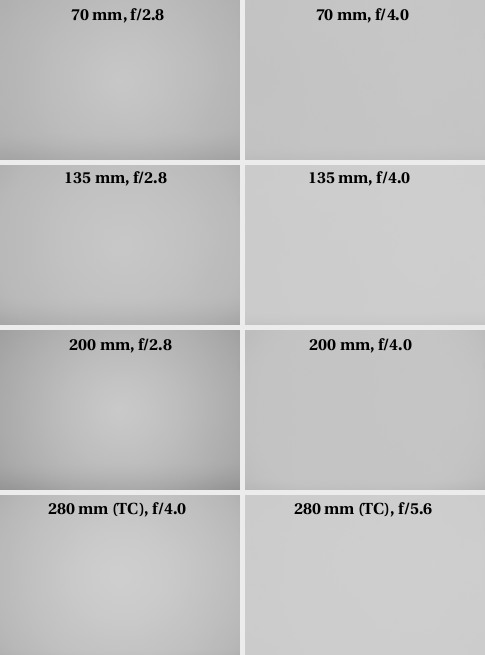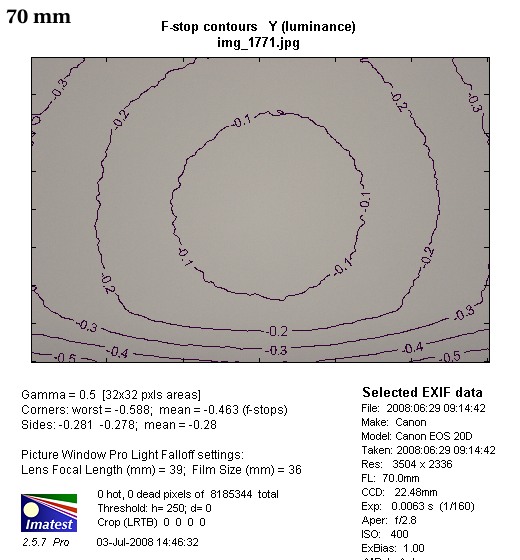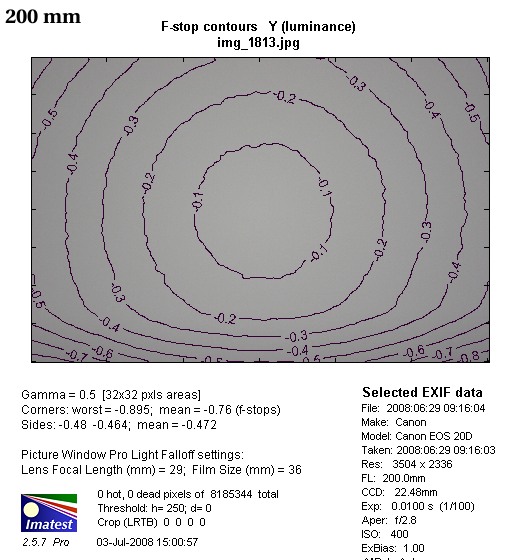Tamron SP AF 70-200 mm f/2.8 Di LD (IF) MACRO
8. Vignetting
The Tamron’s results are in fact similar to those of the Sigma or the L Canon lenses. The differences for particular focal lengths are just several percent at most, often within the margin of error.

Please Support UsIf you enjoy our reviews and articles, and you want us to continue our work please, support our website by donating through PayPal. The funds are going to be used for paying our editorial team, renting servers, and equipping our testing studio; only that way we will be able to continue providing you interesting content for free. |
- - - - - - - - - - - - - - - - - - - - - - - - - - - - - - - - - - - - - - - - - - - - - - - -
At 70 mm and wide open the frame corner brightness loss is 15% (-0.46 EV) and it decreases very quickly to an imperceptible level on stopping down, by f/4.0 amounting to only 3%.
Almost identical situation we have at 135 mm. By f/2.8 the vignetting reaches 14% (-0.43 EV) and it decreases to 3% by f/4.0.
Like in the case of its rivals, the vignetting is the most visible at 200 mm. At maximum aperture the frame corner brightness loss is 23% (-0.76 EV) and it decreases to only 6% at f/4.0
Using a converter makes the situation better again. At 280 mm and by f/4.0 the vignetting is 14% (-0.44 EV) and it decreases to 2% by f/5.6.
 |
 |






